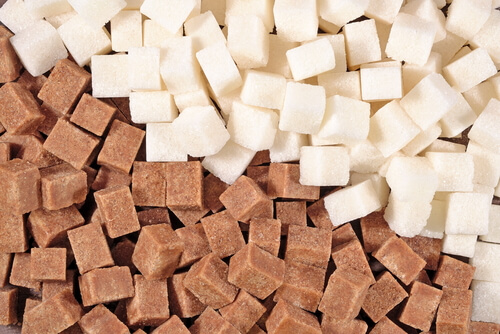The difference between beet sugar vs cane sugar extends beyond taste to how they are grown.
Discover the Uses and Benefits of Beet Sugar Vs Cane Sugar in Your Daily Diet Plan
Checking out the unique top qualities of beet and cane sugar discloses greater than simply their sweetening capacities; it highlights their distinct effects on health and cookeries. Beet sugar, understood for its subtle taste, is often preferred in fragile treats, whereas cane sugar, with its tip of molasses, includes splendor to durable meals. Each type holds its own nutritional account and glycemic effects, welcoming a deeper understanding of their functions in a well balanced diet and sustainable usage methods.
Beginning and Production Procedures of Beet and Cane Sugar

The distinct environments and soil types required for expanding sugar beets and sugarcane add to distinctions in their growing practices and geographic distribution, influencing the business economics and sustainability of their manufacturing. beet sugar vs cane sugar.
Nutritional Comparison Between Beet Sugar and Cane Sugar
Regardless of stemming from various plants, beet sugar and cane sugar are nutritionally very comparable, both mostly containing sucrose. Each supplies about 4 calories per gram, converting to approximately 16 calories per teaspoon. Structurally, both sugars are made up of around 99.95% sucrose, with very little quantities of other materials like wetness and trace element, which do not considerably change their nutritional accounts.

Eventually, when choosing in between beet sugar and cane sugar based upon nutritional content alone, both offer the same advantages and disadvantages as they are basically types of the same molecule-- sucrose, offering fast power without other nutrients.
Impact on Health: Glycemic Index and Caloric Content
Discovering further into the impacts of beet sugar and cane sugar on wellness, it is essential to consider their glycemic index and caloric material. Both sugars are classified as sucrose, which consists of sugar and fructose. This make-up leads them to have a similar effect on blood glucose degrees. The glycemic index (GI) of both beet and cane sugar is around 65, classifying them as high-GI foods, which can create quick spikes in blood glucose levels. This is a vital element for people taking care of diabetic issues or those attempting to maintain their power degrees throughout the day.
Each get redirected here kind of sugar consists of about 4 calories per gram, making my blog their calorie material matching. For those monitoring caloric intake, specifically when handling weight or metabolic health and wellness conditions, comprehending this equivalence is important (beet sugar vs cane sugar). Nonetheless, extreme consumption of any high-calorie, high-GI food can add to health problems such as excessive weight, heart problem, and insulin resistance.
Environmental and Economic Considerations of Sugar Production
Beyond health and wellness influences, the manufacturing of beet and cane sugar also increases significant environmental and financial worries. Sugar beet cultivation has a tendency to require cooler environments and has a lower geographical impact compared to sugar cane, which grows in exotic areas.
Furthermore, making use of chemicals and fertilizers in both beet and cane sugar growing can cause dirt destruction and air pollution, more influencing biodiversity and local water bodies (beet sugar vs cane sugar). The choice between cultivating sugar beet or cane usually hinges on regional ecological conditions and economic variables, making the sustainability of sugar production an intricate concern
Culinary Applications and Flavor Distinctions
While the ecological and financial aspects of sugar manufacturing are indeed significant, the choice between beet and cane sugar also influences cooking applications and taste accounts. Beet sugar, obtained from the sugar beet plant, is recognized for its remarkably neutral preference.
Walking stick sugar, extracted from sugarcane, often keeps molasses traces, which give an unique richness and deepness. The mild variation in moisture material between beet and cane sugar can impact the structure and uniformity of recipes, making cane sugar a preferred choice for particular dishes that profit from its one-of-a-kind homes.

Verdict
To conclude, both beet and cane sugar description have distinctive beginnings and production processes, providing similar dietary accounts with minor distinctions in sodium content and flavor. While their effect on health, particularly concerning glycemic index and calories, is comparable, the choice between them commonly steams down to ecological, financial variables, and particular culinary needs. Recognizing these elements can direct customers in making informed decisions that line up with their wellness objectives and flavor choices.